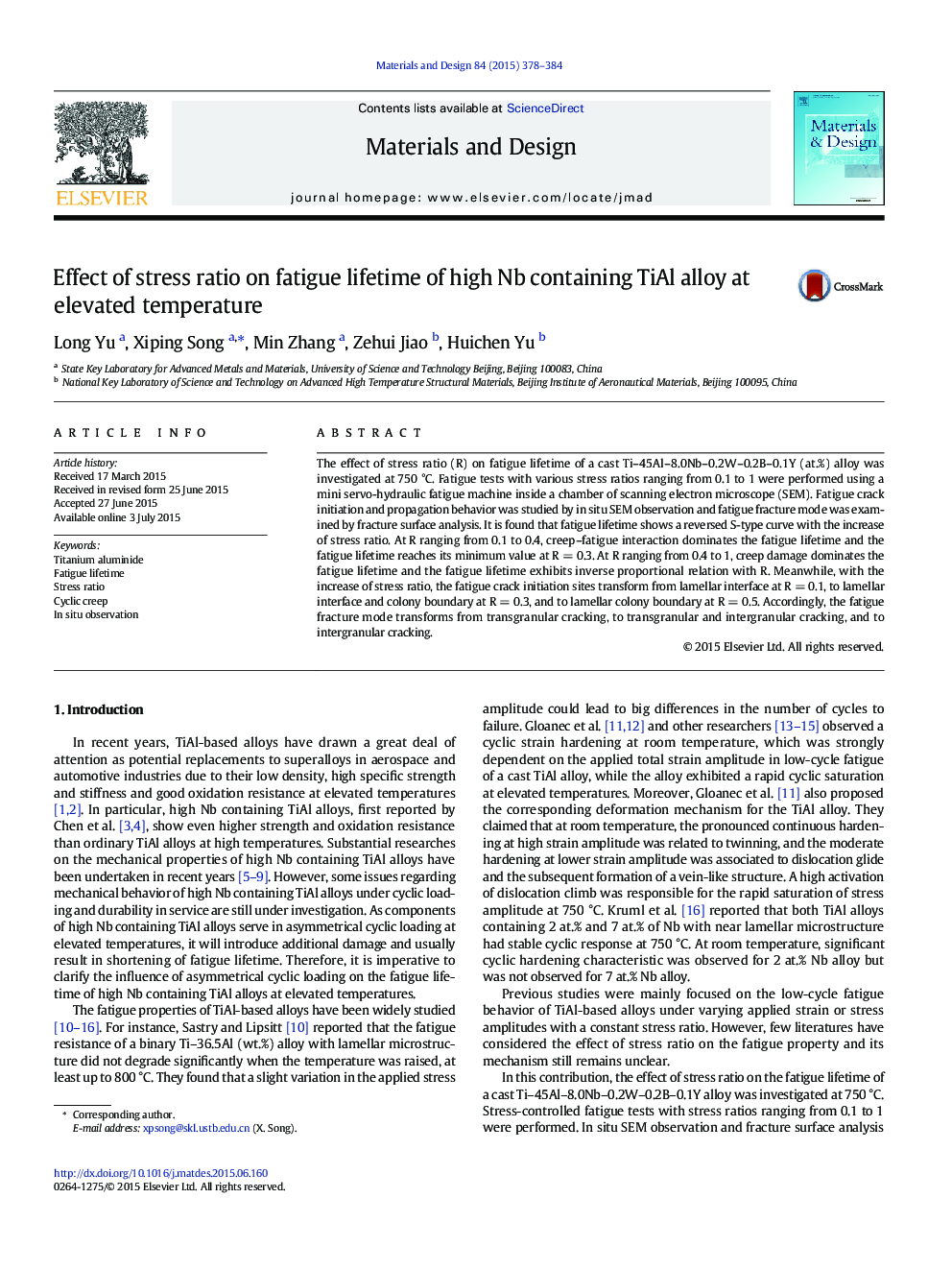| کد مقاله | کد نشریه | سال انتشار | مقاله انگلیسی | نسخه تمام متن |
|---|---|---|---|---|
| 828257 | 1470298 | 2015 | 7 صفحه PDF | دانلود رایگان |

• Fatigue life shows a reversed S-type curve with the increase of stress ratio.
• Creep–fatigue mechanism dominates at stress ratio ranging from 0.1 to 0.4.
• Creep mechanism dominates at stress ratio ranging from 0.4 to 1.
• Three fatigue fracture modes are observed.
The effect of stress ratio (R) on fatigue lifetime of a cast Ti–45Al–8.0Nb–0.2W–0.2B–0.1Y (at.%) alloy was investigated at 750 °C. Fatigue tests with various stress ratios ranging from 0.1 to 1 were performed using a mini servo-hydraulic fatigue machine inside a chamber of scanning electron microscope (SEM). Fatigue crack initiation and propagation behavior was studied by in situ SEM observation and fatigue fracture mode was examined by fracture surface analysis. It is found that fatigue lifetime shows a reversed S-type curve with the increase of stress ratio. At R ranging from 0.1 to 0.4, creep–fatigue interaction dominates the fatigue lifetime and the fatigue lifetime reaches its minimum value at R = 0.3. At R ranging from 0.4 to 1, creep damage dominates the fatigue lifetime and the fatigue lifetime exhibits inverse proportional relation with R. Meanwhile, with the increase of stress ratio, the fatigue crack initiation sites transform from lamellar interface at R = 0.1, to lamellar interface and colony boundary at R = 0.3, and to lamellar colony boundary at R = 0.5. Accordingly, the fatigue fracture mode transforms from transgranular cracking, to transgranular and intergranular cracking, and to intergranular cracking.
Figure optionsDownload as PowerPoint slide
Journal: Materials & Design - Volume 84, 5 November 2015, Pages 378–384